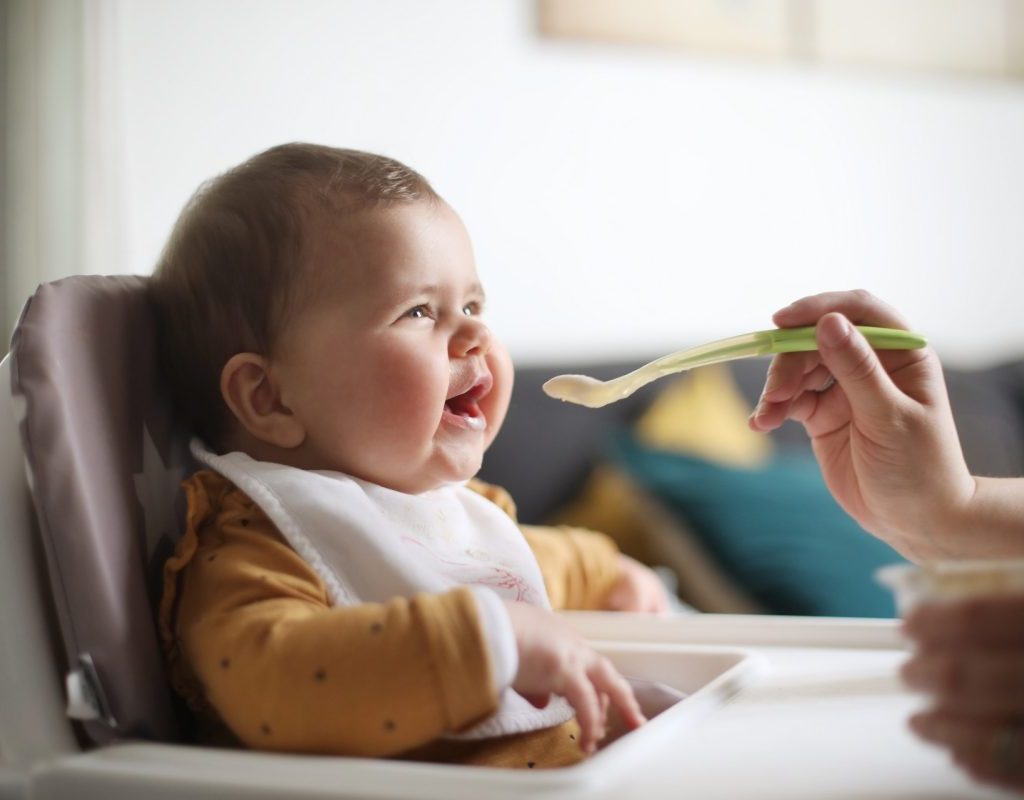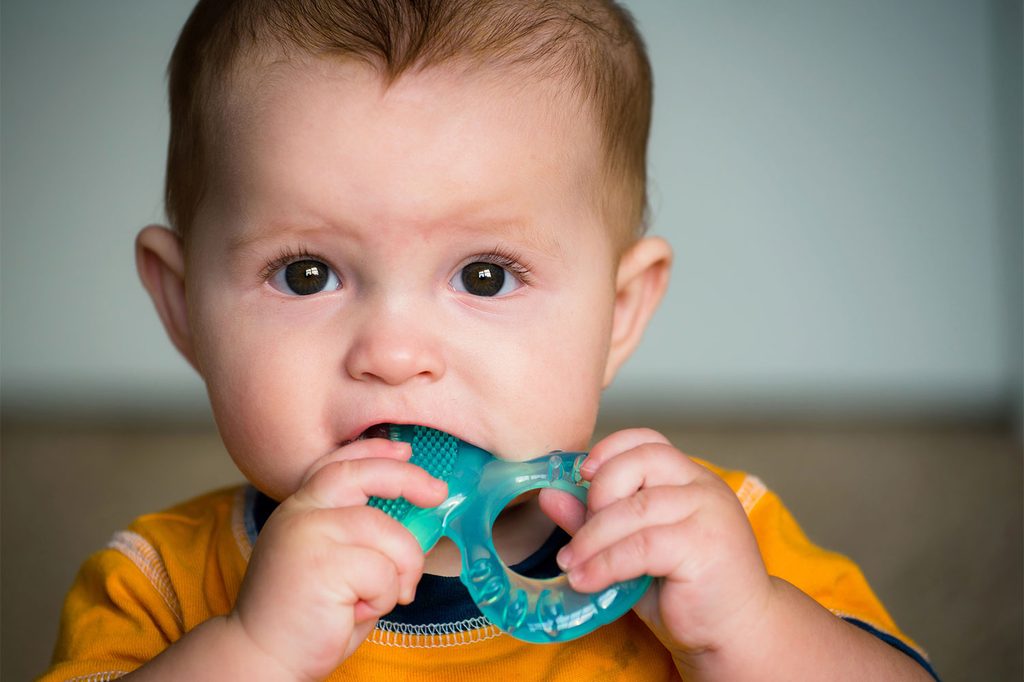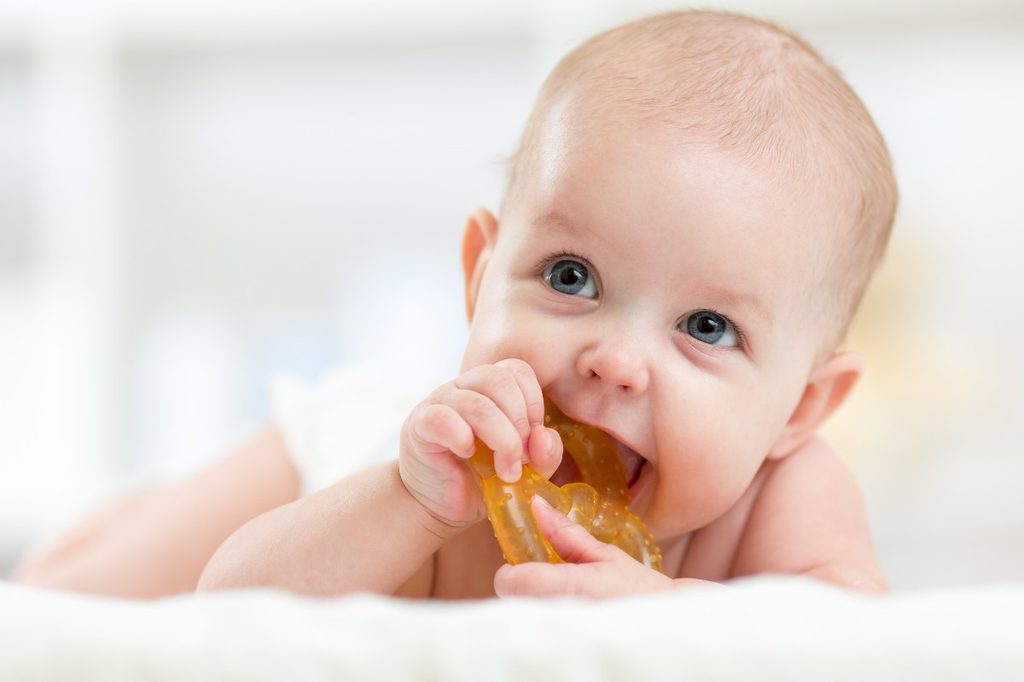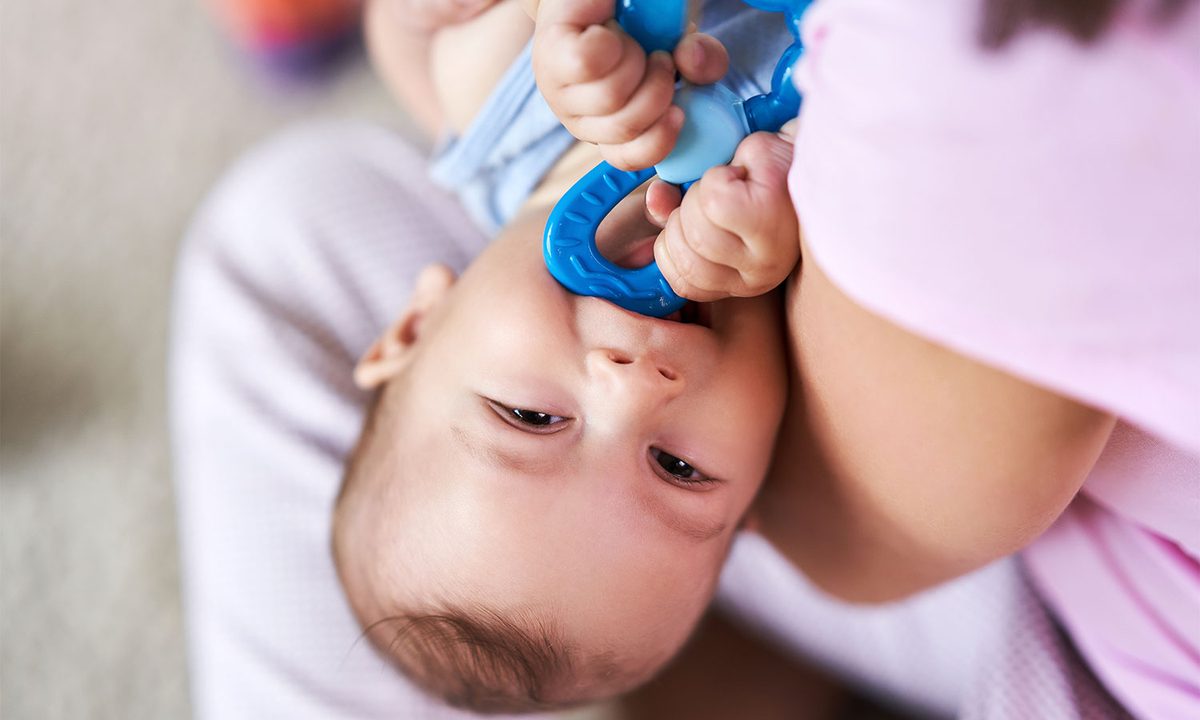Nothing can turn a happy baby into a cranky one quite like teething. Although it’s exciting to know that your little one will soon be ready to try more textures and different foods with their new teeth, making mealtime more fun, it also means a painful experience for your baby. And, while your baby will eventually be able to try lots of new foods with their new teeth, your teething baby not eating is a temporary reality because their mouth is just too sore.
It’s upsetting to see babies uncomfortable and in pain when cutting new teeth. The good news is that there are ways to help your baby through the teething process while encouraging your teething baby to eat. Once you establish that teething is the cause of a baby’s refusal to eat, either by a pediatric visit or feeling that shark tooth jutting out, there are some tried-and-trusted strategies to help keep them nourished. What should you do when your teething baby isn’t eating as much as they normally do? Here are some ways to help.
Teething baby not eating? Here are some solutions

Use a mesh feeder
A mesh feeder lets your baby gum food for an extended time without having to take bites. Mesh feeders are great for frozen foods, iced cubes of puree, milk, or a smoothie. The texture of the mesh and the cold from the chilled foods feel soothing on your child’s gums. The big bonus of mesh feeders is the baby will be slowly taking in some calories.
Give some Tylenol or Ibuprofen
If your child is four months or older, you could offer acetaminophen (Tylenol). At 6 months old, babies are ready for ibuprofen (Motrin). Both acetaminophen and ibuprofen provide some relief from the pain of teething. Pain relief could help your baby feel up to eating. Consult with a doctor before using either product to relieve teething pain. Numbing gels applied directly to the gums are not recommended.
Try going back to purees
Even if your baby has graduated from purees to more solid foods, while the gums are sensitive from teething, they might not want to chew. Break out the baby food again and keep anything that needs to be chewed in the cabinet until the tooth has come through. Soft foods like soup, mashes, yogurt, applesauce, hummus, scrambled eggs, and purees are great options.
Provide something to gnaw on
Because everyone is different, babies may want something hard to chew on instead of soft foods. Sometimes, babies want to rub their gums against where the tooth is trying to burst through. Foods like carrot sticks or whole green beans are good for this. To avoid choking, a baby should be under supervision while seated in a highchair.
Push liquids
Staying hydrated is important, but you could also get your baby’s caloric intake in with liquids as well. Make smoothies with veggies, healthy fats, and protein powder hidden with fruits, making it a complete meal. Drinking a cool smoothie will be soothing on tiny gums.
Make it all cold
Chill any food before serving it to your baby. Whatever you would give at room temperature, even things like crackers, put it in the fridge for a bit first. Anything frozen is perfect for a teething baby. Hello, popsicles! Make your own popsicles from a kale smoothie for a healthy twist.
Numb first, eat next
Let baby chew on a cold teether before mealtime so their gums are numbed up to reduce pain while eating. Numbing the sore gums with a cold teether before mealtime may make food more inviting. They’ll be more likely to want to eat if they get to chew on something icy first.
Do babies eat less when teething?

Babies may eat less when their mouths are sensitive as a result of teething. “It’s OK, and normal, for babies to eat a bit less during teething,” reassured Dr. Dina Kulik when speaking to Today’s Parent.
Eating becomes uncomfortable or painful for teething babies, to press their gums into food when their gums are so sensitive. Babies may also not like the feel of utensils clanging against their sore gums. Instead of eating, they may want to chew on teethers because it brings a bit of relief to their gum discomfort. “As long as your baby is drinking fluids, the reduced appetite is not a concern,” Dr. Kulik said. “Just keep offering food and your baby will feed again when the pain is gone.”
A red flag is if a baby is also refusing liquids. If your teething baby won’t eat or drink, it’s important to talk to your pediatrician to make sure there isn’t something else going on.
How long does teething fussiness last?

Teething can seem like a never-ending process, especially if your little one is having a tough time with it. By the time your child celebrates their third birthday, they should have all of their baby teeth. Like everything else, when it comes to developmental milestones, every child is different, and this is just a guideline.
Fortunately, all those teeth don’t come in at the same time, which unfortunately means your little one will have to endure the discomfort of teething multiple times. As Healthline notes, most teeth appear in pairs and will cause your baby about a week of fussiness, although it can feel like a lifetime.
Those first teeth will typically break through any time between the ages of 6 to 10 months, and each new pair of teeth will appear every 2 to 4 months after that until your child reaches the age of 2.
Signs to look for

Swollen and tender gums and a lack of appetite are two telltale signs of teething, but there are a few other signs parents can be on the lookout for. Teething babies tend to drool a lot, which can not only get a bit messy but can also cause a rash on their poor cheeks. This is the age when many parents will keep a bib or other form of drool cloth on their little one at all times. This makes it easy to keep the baby’s face clean and dry without constantly having to find a towel.
Teething babies may also start to pull on their ears, rub their cheeks as they teethe, or start chewing on their hands as well as any other hard object they can get their hands on. It can be hard for parents to watch their baby suffer through the teething process, but we have some suggestions that may help.
What to avoid

Parents are just starting to introduce new foods to their baby at the same time they begin teething, so it can sometimes be hard to tell if your child doesn’t like something or if it’s simply irritating their gums. To avoid any potential irritation, experts suggest avoiding citrusy foods like oranges and lemons as they can be an irritant. Spicy and salty foods should also be avoided, as they can also irritate the gums.
Hard foods like raw carrots, apples, or crackers can be too tough on their sensitive gums and may cause pain. Tomatoes, or flavored snacks, can further irritate tender gums. Sticky or overly sugary foods, like gummy candies or honey, should also be avoided, as they can cling to the teeth and contribute to decay. Instead, opt for soft, cool foods like chilled yogurt, mashed bananas, or cold teething-friendly fruits to soothe their gums while providing essential nutrients.
The good news about a teething baby not eating as much is that it rarely goes on long enough to cause health issues. If you have concerns, though, check with your pediatrician, as babies dehydrate quickly. Dealing with a teething tot isn’t the most fun part of parenting. And a hungry, teething baby is about as bad as it gets. But with these helpful tips, you and your little one just might find the trick that makes eating a soothing experience.




